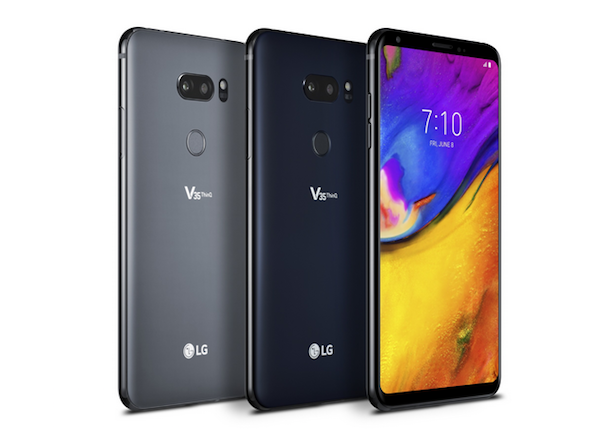LG V35 ThinQ Vs. V30S ThinQ Vs. V30: Comparison Review Of Specs, Features

LG has finally introduced the V35 ThinQ, a new Android handset that is described as an upgraded version of last year’s V30 flagship just like the V30S ThinQ. Given that all three phones are cut from the same cloth, many consumers might be confused on how to distinguish one from the other two. So, below is a round-up of the specs and features of the three devices to establish their key differences and similarities.
Display
The most obvious reason why it’s a bit hard to tell each LG handset apart has to do with their displays. The V35 ThinQ, V30S ThinQ and V30 sport the same 6-inch OLED screen with 18:9 aspect ratio and 1440 x 2880 screen resolution. Their displays also have the same pixel density, which is 537 ppi.
Their screens are all protected by Corning Gorilla Glass 5 and are Dolby Vision/HDR10 compliant. They also feature the Always-on display technology. Moreover, all three are using the LG UX 6.0+ interface — LG’s own custom Android skin that was originally named Optimus UI.
Performance and Storage Capacity
Among the three, only the V35 ThinQ is powered by Qualcomm’s Snapdragon 645 System-on-Chip and the Adreno 630 GPU. Meanwhile, both the V30S ThinQ and V30 are using Qualcomm’s Snapdragon 835 chipset and the Adreno 540 GPU. This means the V35 ThinQ is more powerful than the other two handsets.
Both the V35ThinQ and V30S ThinQ have 6GB of RAM, while the 2017 flagship phone only has 4GB of RAM. The V35 ThinQ and V30 have the same storage options (64GB and 128GB). On the other hand, the V30S ThinQ comes in 128GB and 256GB storage variants.
Design and Build
All three LG phones are covered in Gorilla Glass 5 on the front and at the back. Since they have the same design, they all have aluminum frames and an IP68 certification for dust and water resistance. They also passed the US military’s MIL-STD 810G tests for reliability of equipment performance in harsh environments.
Without their specific branding on the back, it’s a bit hard to tell the three phones apart. All three apparently have the same layout and placement of the fingerprint reader, dual-lens camera module and LED flash.
Camera Technology
The V35 ThinQ sports an 8-megapixel Wide Angle front camera with f1/9 aperture. On the contrary, the V30 and V30S ThinQ only sport a 5-megapixel lens with f/2.2 aperture. At the back, the V35 ThinQ has a dual 16-megapixel camera setup that’s composed of one Super Wide Angle lens and another Standard Angle lens. As for the V30S ThinQ and V30, they both have one 16-megapixel lens and another 13-megapixel lens on their rear camera modules.
Miscellaneous
All three handsets are B&Q Play certified, which means they are capable of producing very good sound quality when earpphones are plugged in thanks to Bang and Olufsen. They house the same non-removable Li-Po 3300 mAh battery that is compatible with Quick Charge 3.0 and supports wireless charging.
When LG launched the V30S ThinQ in March, the company introduced the AI features that came with the device. Such features were brought to the V30 shortly after via a software update. The V35 ThinQ also has all of the software features, with the addition of a new low light photography capability called Super Bright Camera that captures low light images four times faster.
Finally, the V35 ThinQ has some new features that LG introduced with the G7 ThinQ flagship phone. It has Google Lens in the camera app and within Google Assistant and Google Photos, as well as Super Far Field Voice Recognition (SFFVR) technology. Google Lens allows users to get more information about landmarks and objects. Meanwhile, SFFVR enables users to access Google Assistant by voice even if they are five meters away from the handset.
© Copyright IBTimes 2024. All rights reserved.





















